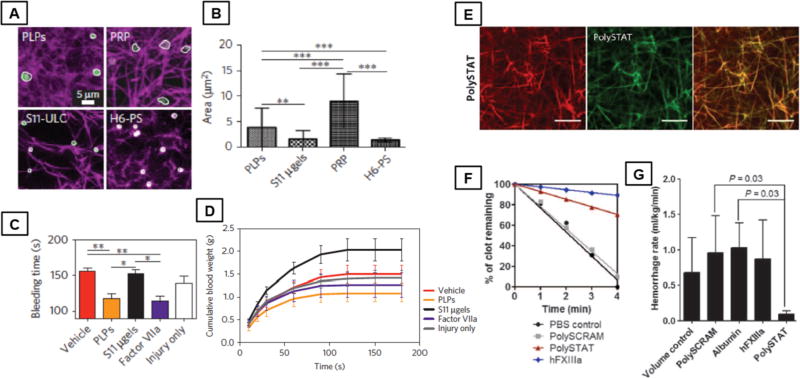Figure 8.
Selected results from hemostatic studies carried out with platelet-like microgel particles (PLPs, 8A–8D) and with polySTAT injectable polymer systems (8E–8G). 8A shows magnified images of fibrin-binding soft ultralow crosslinked microgel particles (PLPs), natural platelets (PRP), non-binding control microgel particles (S11–ULCs), and fibrin-binding rigid polystyrene particles (H6-PS) within fibrin matrices 1 hr post fibrin polymerization and 8B shows the calculated spread area of PLPs, PRP platelets, S11-ULCs and H6-PS particles within the fibrin matrices, demonstrating that soft PLPs have spreading behavior comparable to natural platelets (PRP) and greater than control particles; 8C and 8D show bleeding time and blood loss analysis data in rat femoral vein injury model where administration of PLPs resulted in reduced bleeding time and blood loss comparable to administration of FVIIa and significantly lower than treatment with vehicle or control particles; 8E shows the homogenous incorporation of the fibrin-binding polySTAT polymer (green fluorescence) within native fibrin matrix (red fluorescence); 8F shows that polySTAT incorporation within fibrin results in crosslinking based strengthening of fibrin and thus reduction of clot lysis over time (i.e. increased clot stability) compared to treatment with control saline and control polymer (polySCRAM); 8G demonstrates that intravenous administration of polySTAT results in significant reduction of blood loss rate in a rat femoral artery hemorrhage model. Figure components adapted and reproduced with permission.[365,368] Copyright 2014, Macmillan Publishers Ltd and 2015, AAAS.

